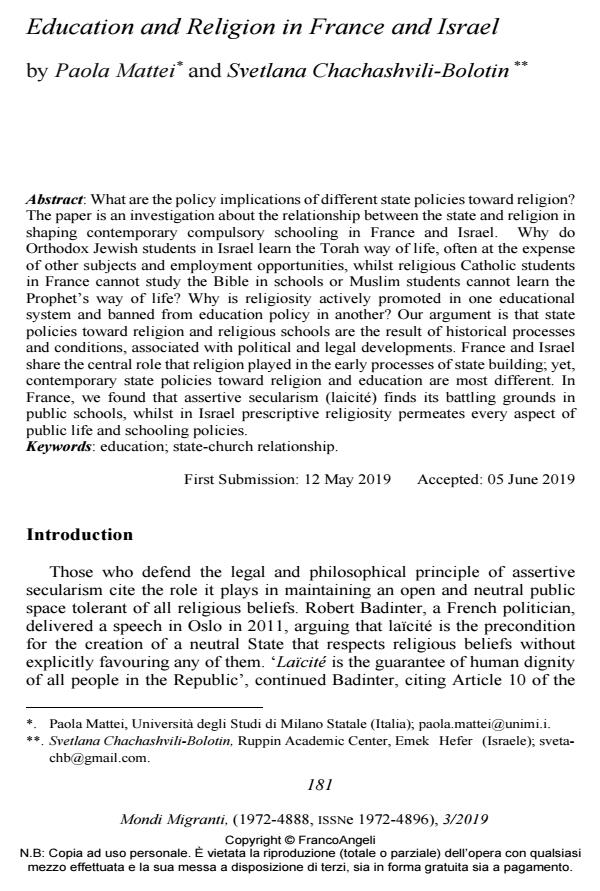Education and Religion in France and Israel
Journal title MONDI MIGRANTI
Author/s Paola Mattei , Svetlana Chachashvili-Bolotin
Publishing Year 2019 Issue 2019/3
Language English Pages 21 P. 181-201 File size 221 KB
DOI 10.3280/MM2019-003009
DOI is like a bar code for intellectual property: to have more infomation
click here
Below, you can see the article first page
If you want to buy this article in PDF format, you can do it, following the instructions to buy download credits

FrancoAngeli is member of Publishers International Linking Association, Inc (PILA), a not-for-profit association which run the CrossRef service enabling links to and from online scholarly content.
What are the policy implications of different state policies toward religion? The paper is an investigation about the relationship between the state and religion in shaping contemporary compulsory schooling in France and Israel. Why do Ortho-dox Jewish students in Israel learn the Torah way of life, often at the expense of other subjects and employment opportunities, whilst religious Catholic students in France cannot study the Bible in schools or Muslim students cannot learn the Prophet’s way of life? Why is religiosity actively promoted in one educational sys-tem and banned from education policy in another? Our argument is that state pol-icies toward religion and religious schools are the result of historical processes and conditions, associated with political and legal developments. France and Israel share the central role that religion played in the early processes of state building; yet, contemporary state policies toward religion and education are most different. In France, we found that assertive secularism (laicité) finds its battling grounds in public schools, whilst in Israel prescriptive religiosity permeates every aspect of public life and schooling policies.
Keywords: Education; state-church relationship.
Paola Mattei , Svetlana Chachashvili-Bolotin, Education and Religion in France and Israel in "MONDI MIGRANTI" 3/2019, pp 181-201, DOI: 10.3280/MM2019-003009